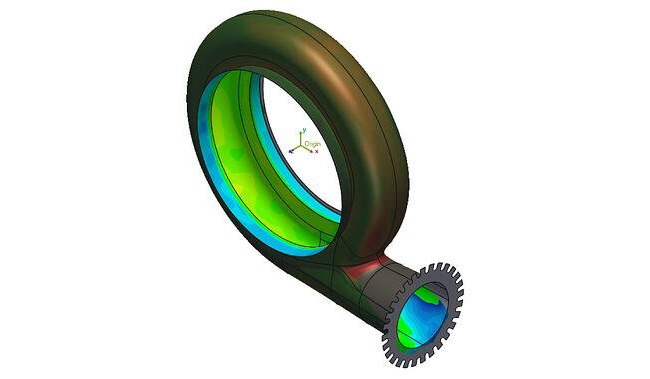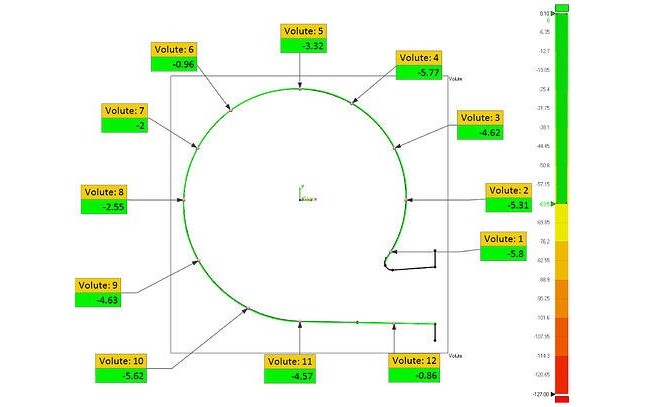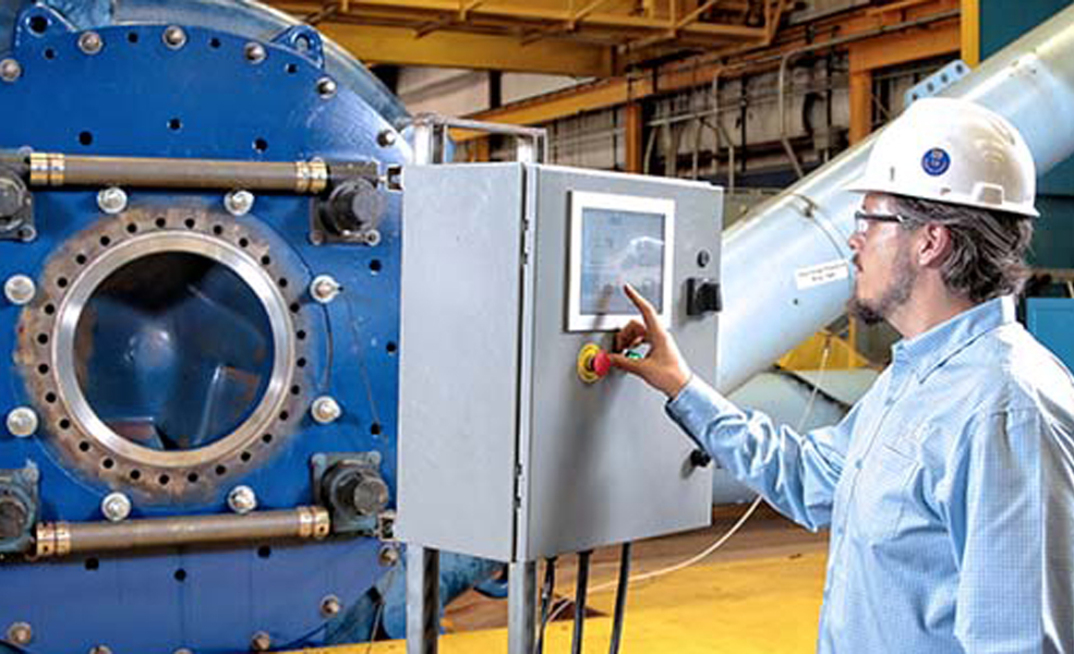At GIW, we're always working to help our customers achieve their maximum production potential. We combine research and development (R&D) with hands-on knowledge to create solutions that continuously improve our products and services. One area of innovation is in the way we calculate our pump casings' wear life. We measure minimum casing thickness, also called retirement thickness, to determine the casings' replacement intervals.
There are many ways to measure minimum casing thickness, but not all measurement techniques are made equal. We conducted a series of tests on these techniques to help our customers succeed and lower their total cost of operation (TCO). Here is a look at what we found.

Casing wear
Wear is inevitable in all slurry pumps, and there are only so many ways to reduce it. Accuracy is the top priority when measuring wear; having an incorrect timeline for part replacement can cause unexpected downtime and production losses. Maintenance can prolong a pump's wear life; however, the most critical factor in developing a replacement schedule is taking an accurate wear measurement. Obtaining this measurement involves calculating a pump's minimum allowable thickness.
Under normal conditions (i.e., operations without water hammer or excessive loads), operators can perform one or more calculations. A Finite Element Analysis (FEA) model can assess the assembly at a given pressure, which can provide an accurate measurement, but may take a few days to get results. Operators also can use our Minimum Casing Thickness Graphs for a quicker analysis, but it may be less accurate.
Our customers need a measurement technique that provides maximum precision in minimal time. That's where the staff at our Fort McMurray facility come in!
Researching measurement
We performed tests in our laboratory on a few different measurement techniques. Each was rated on how easily and accurately it checked pump thickness.
- Manual measurement: One of our engineers developed a large caliper that directly measured the thickness of the casing; we used this tool as our control.
- Ultrasonic thickness measurement: We tested technicians of varying skill levels on this technique; we also used different calibration materials, including a standard steel and a 28G calibration block.
- Laser scanning: We used this tool to measure localized wear in a quicker and more repeatable process than other techniques.
Some of our results were as expected. For example, skilled technicians could obtain more accurate and repeatable results than unskilled ones. Others, however, were more revelatory. Ultrasonic thickness calibrated with a standard steel calibration block gave us lower measurement values than the actual thickness; operators using this technique could retire their casing earlier than necessary. The 28G calibration block eliminated the skill gap between technicians, but still provided less than perfect measurements.
The best results came from laser scanning, which measured as accurately as the ultrasonic thickness techniques, but within less time and with greater repeatability.

Bringing the research to you
When selecting a method to measure casing thickness, consider your pump's criticality and any implications for TCO. Additionally, calibrate with the specific material in use, especially if you use ultrasonic thickness measurement. At GIW, we believe that laser scanning presents the best opportunity to extend your pump's life by accurately measuring localized wear. It has quickly become our tool of choice with our customers. With its help, we are improving how we understand wear, predict casing wear life, and — most importantly — lower your TCO.
"We've had several successes in laser scanning. Most recently, a customer was about to retire a large pump casing because their Ultrasonic Testing (UT) readings said it wouldn't survive another duty cycle. However, when we scanned it, there was ample material left for another duty run, thereby saving the customer a significant amount of money." - Andrew Slocombe, Service Operations Manager.
This new program is currently available to our customers in the oil sands, based out of our Fort McMurray service center. It is not yet available elsewhere, but the program is growing! Get in touch with us to request minimum thickness calculations for your pumps and inquire about the availability of laser scanning services in your area.
ABOUT THIS COMPANY
GIW Industries
GIW delivers slurry transport solutions to your industry every day. Everything we do revolves around supporting you. Choose GIW today and you’ll gain a partner that’s dedicated to your success.
HEAD OFFICE:
- 5000 Wrightsboro Rd, Grovetown, GA, 30813, United States
- Phone: +1 706 863 1011
- Website: www.giwindustries.com
- Email: GIW-Marketing@ksb.com


























